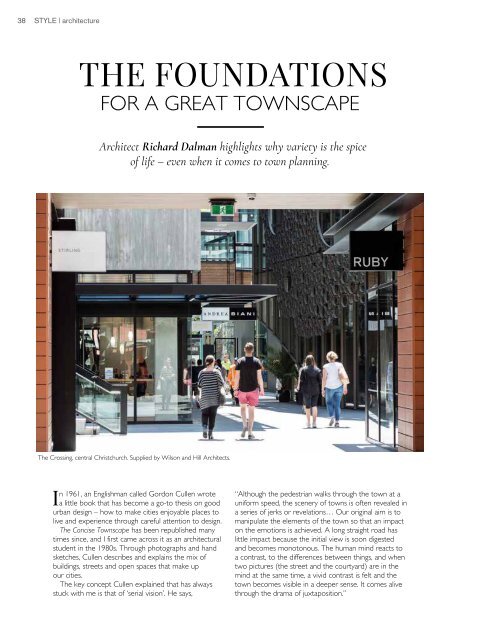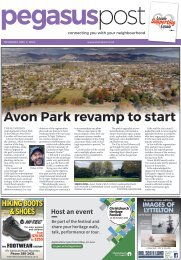You also want an ePaper? Increase the reach of your titles
YUMPU automatically turns print PDFs into web optimized ePapers that Google loves.
38 STYLE | architecture<br />
THE FOUNDATIONS<br />
FOR A GREAT TOWNSCAPE<br />
Architect Richard Dalman highlights why variety is the spice<br />
of life – even when it comes to town planning.<br />
The Crossing, central Christchurch. Supplied by Wilson and Hill Architects.<br />
In 1961, an Englishman called Gordon Cullen wrote<br />
a little book that has become a go-to thesis on good<br />
urban design – how to make cities enjoyable places to<br />
live and experience through careful attention to design.<br />
The Concise Townscape has been republished many<br />
times since, and I first came across it as an architectural<br />
student in the 1980s. Through photographs and hand<br />
sketches, Cullen describes and explains the mix of<br />
buildings, streets and open spaces that make up<br />
our cities.<br />
The key concept Cullen explained that has always<br />
stuck with me is that of ‘serial vision’. He says,<br />
“Although the pedestrian walks through the town at a<br />
uniform speed, the scenery of towns is often revealed in<br />
a series of jerks or revelations… Our original aim is to<br />
manipulate the elements of the town so that an impact<br />
on the emotions is achieved. A long straight road has<br />
little impact because the initial view is soon digested<br />
and becomes monotonous. The human mind reacts to<br />
a contrast, to the differences between things, and when<br />
two pictures (the street and the courtyard) are in the<br />
mind at the same time, a vivid contrast is felt and the<br />
town becomes visible in a deeper sense. It comes alive<br />
through the drama of juxtaposition.”


















